Are these not the results you were looking for? Try using quotes if searching on multiple words.
Part 3: Raleigh’s Main Street
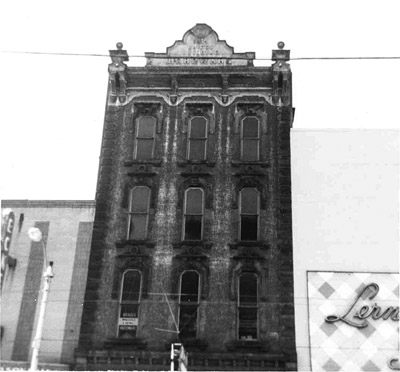
Briggs Hardware (1874) on Fayetteville Street in 1965
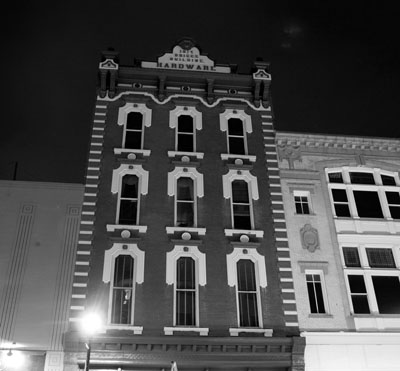
Briggs Hardware 2008, now home of the City History Museum. Next door is the former Boylan Pearce department store with its recently restored Beaux Arts facade.

200 block of Fayetteville St showing the Tucker Building and the Post Office on the left

200 block in 2008
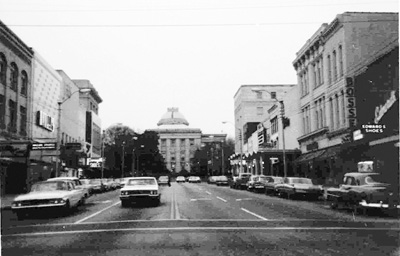
View toward the Capitol from the 100 block, 1966. With the exception of the two state government buildings at the end, all the structures in this view are gone.
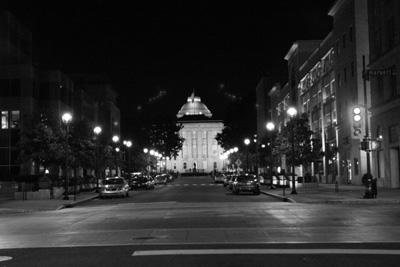
In 2008; Looks beautiful at night, doesn’t it?
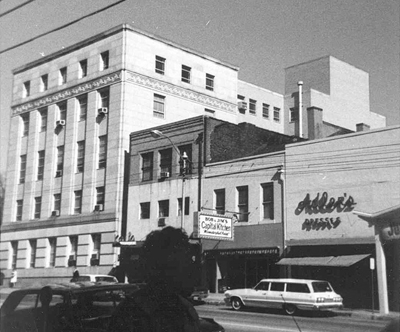
Close up of east side of the street in the 1966 view.

Last night.
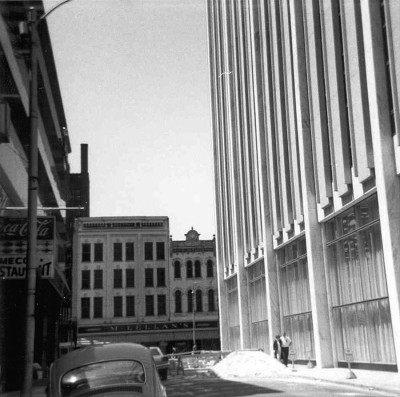
View toward the 200 block from the alley between the (old) Wachovia building on the right and “Lenin’s Tomb” on the left.
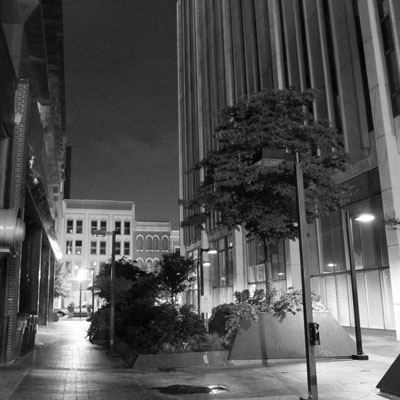
The view today. The alley was closed during the mall period.

The lower floors of ” Raleigh’s Little Seagram Building” and the 1960s facade of Hudson Belk.
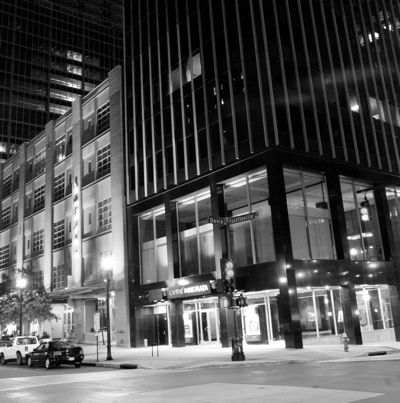
Same view today.
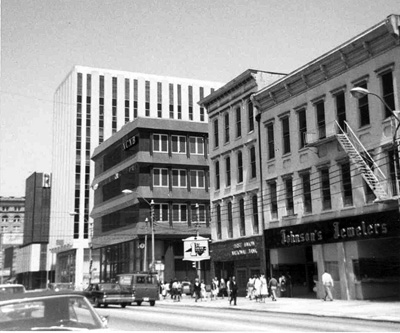
The east side of the 200 and 300 blocks in 1966 showing the (old) Wachovia building, “Lenin’s Tomb” and the block of 19th century storefronts where the RBC building is now going up.
If Capitol Square was the hub of Raleigh, then Fayetteville Street was its strongest spoke. For most of its existence and well into the 20th century this broad thoroughfare was the commercial and governmental axis of the city. Along its course were Raleigh’s principal businesses, hotels, banks, office buildings and government centers.
(more…)
The Center of Town

The Capitol from Hillsboro St. in 1965.

Same view today.
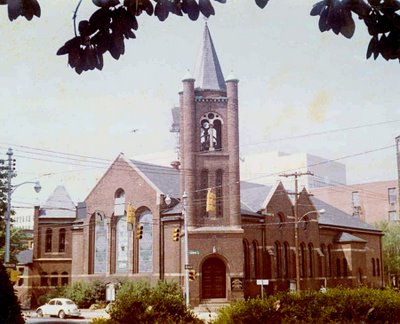
First Presbyterian about 1968.

Same view at night today.
Capitol Square (or, more properly, Union Square) has been both the geographical and political center of downtown Raleigh ever since the city was surveyed and laid out by William Christmas in 1792. With the massive Capitol building at its center, the square is anchored at its four corners by four imposing church buildings. Encircling the square are various somber stone and brick state government buildings, many of which are fine examples of the particular architectural period during which they were built. The first of these to be built, in 1888, was the Supreme Court building (now Labor); the last, the Museum of History in the 1990s.
(more…)
The Blount Street Saga
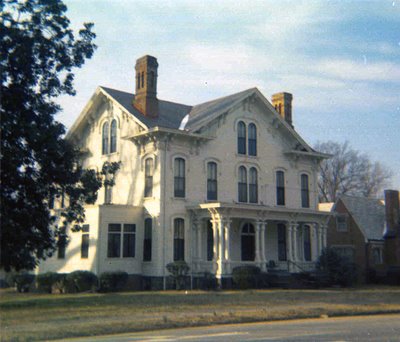
Andrews-Duncan House in 1967

Andrews-Duncan House in 2008
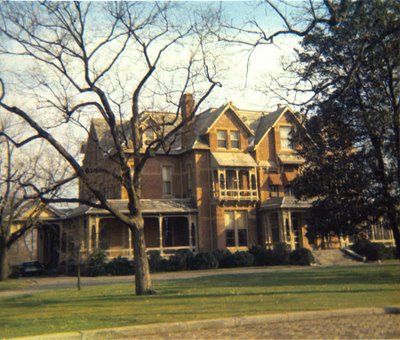
The governor’s mansion in 1967, before the fence
North Blount Street’s glory days as Raleigh’s premier 19th century residential district are long gone… Even before state began its systematic destruction in the early 1960s of the architectural gems that once lined the street the glitter had already faded. For the past 40 years she has held her ground, though, like a proud gap-toothed dowager, barely on life support from the state, patiently awaiting her final demise.
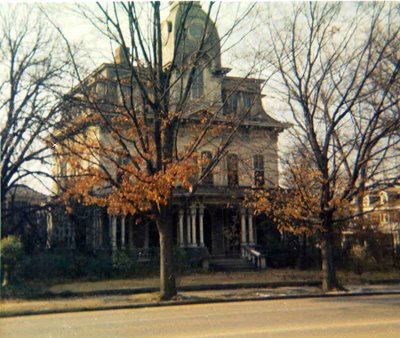
Heck-Andrews House in 1967
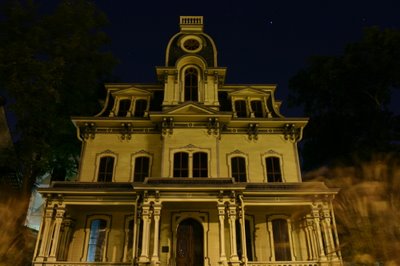
Heck-Andrews House in 2007
When I was a kid in the ’60s N. Blount St. was the primary access route from my neighborhood near Lions Park into downtown Raleigh. I used to marvel at all the stately homes that graced the street, inventing names for many of them…the Heck-Andrews house became “The Blount Street House,†another towered confection the “Addams Family House,†the old Meredith building: “The Castle.†My family attended church downtown, so I looked forward to the weekly visit to my Blount Street fantasyland. Later, I attended junior high at the old Morson (High) School over on E. Hargett St., riding the city bus with the other kids in my neighborhood. Now my weekly visits became a daily event. That’s about the time the state went on its demolition spree, clearing land for its planned grandiose “state government office complex.â€
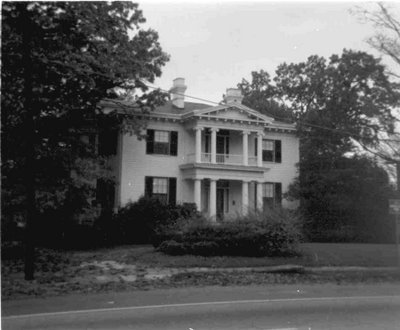
Lewis-Smith House in 1965, when originally located on Wilmington St
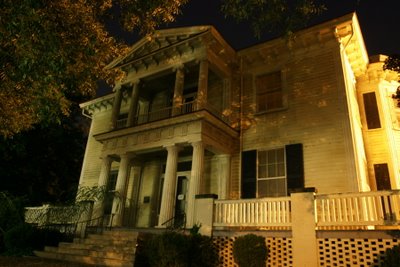
Lewis-Smith House now located on Blount Street
The first to go were two huge twin Second Empire style houses across the street from “The Castle.†They looked like giant frame versions of the Hinsdale house (i.e. now the Second Empire restaurant) on Hillsboro St. (Story was they were built ca 1875 by twin brothers, hence their identical appearance.) Every day as the bus went by, I witnessed their gradual destruction bit by bit until there was nothing left at all. Then the rest of the northern half of that block went. A state government surface parking lot is there now.
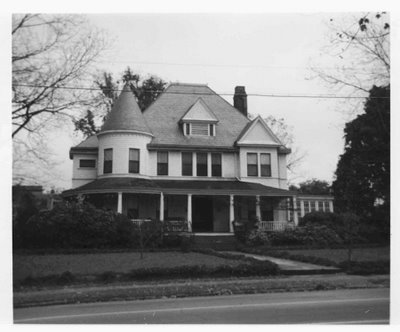
J.H. Pou house in 1965, cor Blount and Polk (gone)
In 1964 I got my first camera — a Kodak Instamatic. That’s when I began to document as many of the Blount Street wonders as I could. On weekend forays downtown I would walk the length of the street all the way from New Bern Ave. out past Peace College, snapping black and white photos along the way.
Then, in 1967 “The Castle†went… I was heartbroken! Then the entire 200 block across from the Governor’s mansion went; then the mansion across the street from the Andrews-Duncan house; then one-by-one, more houses went, cherry-picked by the demolition crews as the state acquired more and more property. I dreaded the day I would come downtown and my beloved Blount Street House, too, would have disappeared!
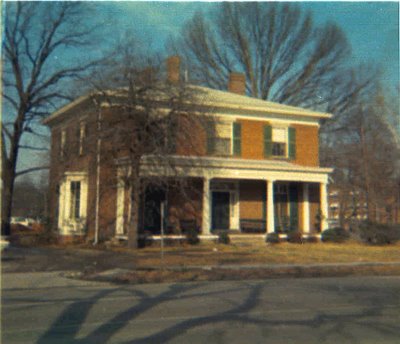
Richard Haywood House in 1967, cor Edenton and Blount
Finally, the madness abated when the state finally realized that a grandiose, landscaped, lake-studded, government office park downtown was unfeasible. (We did get the “Stalinesque†government mall, though, which wiped out another historic neighborhood; but that is another story.) Coincidentally, about this time sentiment favoring historic preservation began to surface: the City of Raleigh Historic Sites Commission was created in 1967; The Society for the Preservation of Historic Oakwood in 1972 (That neighborhood came a hair close to being wiped out too, but that’s also another story.) Then in 1972 the Heck-Andrews House was designated an historic site by the City of Raleigh Commission. Soon the remaining Blount Street houses were likewise designated, and that’s what you see there today. Wherever you see a parking lot now, that is where a Blount Street House once stood. Although the state subsequently moved a handful of properties to Blount St. in order to save them from demolition (oh the irony!), the area seemed destined to further stagnate as state government use became entrenched.
Fast-forward 30+ years, and a real revitalization seems finally at hand, spearheaded by the Blount Street Commons project. Now back in private hands, Blount St. will be restored, so to speak, in an attempt to preserve what is left and to provide in-fill sites for endangered properties and style-appropriate structures. With the Jordan and Merrimon houses now on their way, it looks like the gap-toothed dowager is finally getting a much needed boost in life support, as well as some long overdue implants!

























 Sign up for the Newsletter
Sign up for the Newsletter